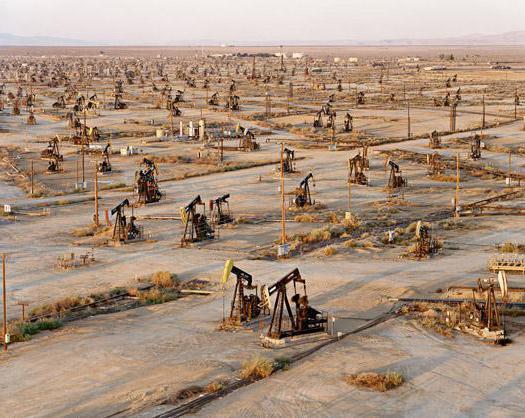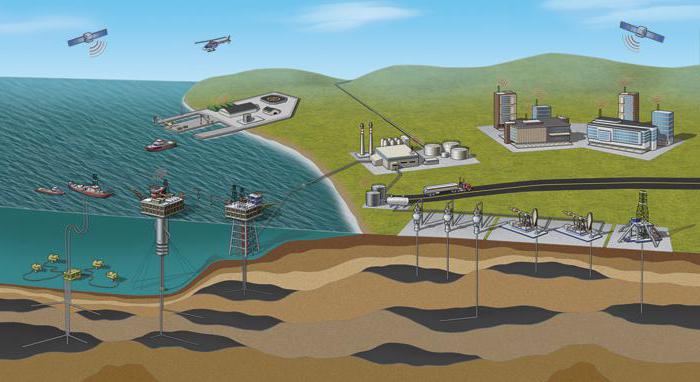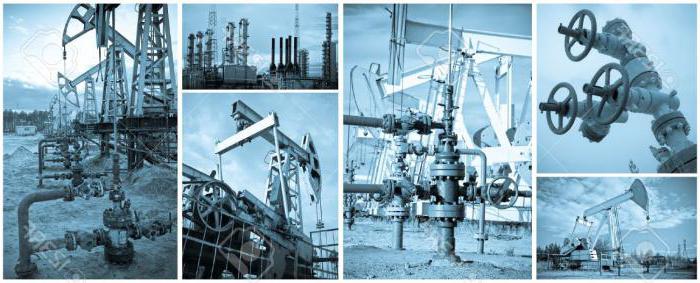Oil is the driving force of the global economy. The first billionaire in the world, Rockefeller, made a fortune on “black gold”. Oil has served as the source of the world famous Nobel Prize. She also turned backward Central Asian countries inhabited by nomads into ultramodern powers that the rest of the world reckons with. Oil itself has been known since ancient times, but was used in its natural form. In ancient Babylon, it was used as a knitting material in construction, and the construction of the legendary Tower of Babel could not do without it.
The Pharaohs of Egypt used this hydrocarbon to embalm the dead. A little later, oil began to be used as part of combustible mixtures. But the extraction of "black gold" was widespread only after the start of the widespread use of its refining. Demand, as you know, creates supply. And the combustible properties of the new old fossil served as a source of enrichment primarily for suppliers of combustible mixtures for lamps. Subsequent miners and processors were enriched due to the demand for processed products - fuels, plastics.
Oil producing countries

In the world, not all states are endowed with the presence of their own oil reserves; in total there are about ninety powers in which it is produced. But in most of these countries, hydrocarbons are not enough even for domestic consumption, because the reserves of this very useful mineral are unevenly distributed across the planet. Different sources change the serial numbers of states when oil production is calculated for the countries of the world, but the three leaders remain unchanged regardless of the source - these are Russia, Saudi Arabia and the United States. These three countries account for about forty percent of the world's black gold production. Fourth place in all sources is given to China - the world leader in terms of hydrocarbon consumption. Oil production by countries per year also differs in different sources, but all the figures indicate that the annual production volume is more than four billion tons.
Oil market players
It would seem that the largest oil production by countries includes Russia, Saudi Arabia and the United States in the top three, and they should solve all market issues. They decide. But nevertheless, the last word on the world market of “black gold” remains with the organization of oil exporting countries (OPEC), which, in addition to Saudi Arabia, includes a dozen countries with a fairly high level of production. Large players in the hydrocarbon market, in addition to manufacturers, are consumers of this product. First of all, it is China, as well as India, Brazil, Canada, the EU countries.
World Reserves

Oil production by country refers only to today. But the future of this industry depends on available stocks. According to statistics, confirmed global oil reserves today amount to almost two trillion tons, of which almost three quarters are in OPEC countries. Russia's reserves make up 5% of the global, the United States - 2%, and China - 1%. The leaders of world oil reserves are Venezuela and Saudi Arabia, which account for 18% and 16% of all world unused sources. The following in the list - Canada, Iraq and Iran - whose reserves account for approximately 10% of the world total. However, oil is produced in 80% of cases in those fields that were discovered more than forty years ago.
Cost price

The price of extracting hydrocarbons from the earth in different countries, of course, varies.The cost of oil production varies by country at times. So, the “black gold” mined in Saudi Arabia and Iran is considered to be the cheapest - four and five dollars per barrel, respectively. The most expensive is offshore oil produced in the North Sea by Norway (seventeen dollars per barrel) and in the United States Gulf of Mexico (twenty-five).
Until recently, the highest cost was consistent with shale hydrocarbons produced in the United States, but over the past three years it has decreased by five times and amounts to about twenty dollars per barrel. The cost of a product produced in Russia ranges from six dollars per barrel (on long-standing projects) to sixteen dollars (on new fields). However, the above cost of oil production by country does not include the logistics component. To get a fossil from the earth is not a problem, it is more important to bring it to the final consumer. And here enormous distances from Russian fields to consumers come into force - to Europe or China, when the cost of hydrocarbons rises to a price of over thirty dollars per barrel. At the same time, oil production in the countries of their direct consumption is less costly. So, companies in Norway, China or the United States do not incur additional logistics costs, so they make big profits. However, only a few countries belonging to OPEC, Russia, Canada and Norway satisfy the local level of oil production. The remaining states need to import “black gold”.
Instead of totals

Despite the fall in world prices, oil production by country remained virtually unchanged. Yes, the historical maximum price (more than one hundred and forty dollars per barrel in 2008) will not be achieved in the near future, but the nineties, when “black gold” cost less than twenty dollars, will not return. New deposits will be developed and new sources of energy will be discovered. Once it seemed that coal could not be replaced with anything, but now there are practically no coal mines in the world. You look, the same fate awaits oil.








